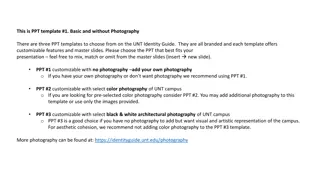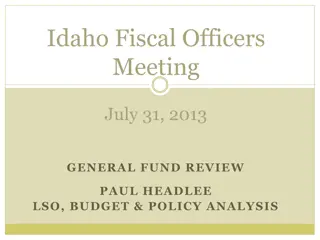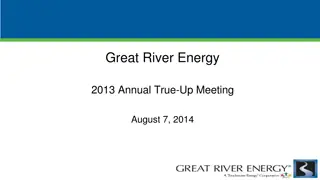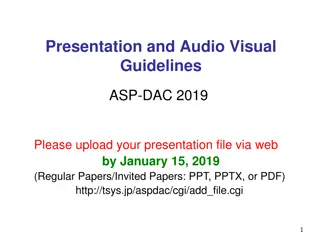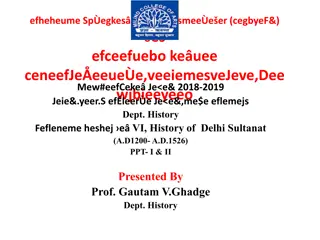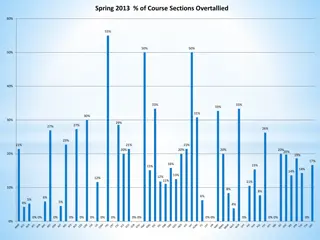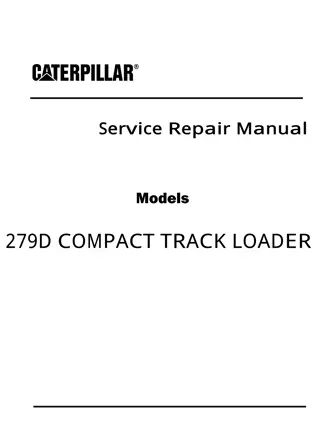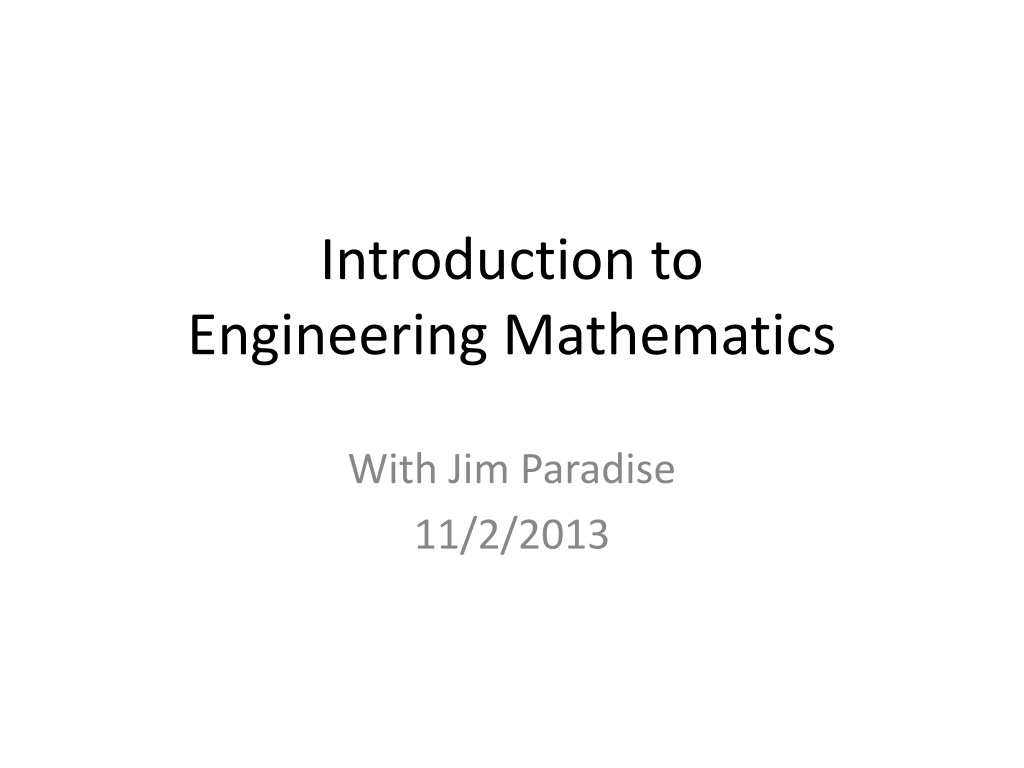
Introduction to Engineering Mathematics and Its Applications
Explore the fundamental concepts of algebra, geometry, trigonometry, and calculus in the context of engineering mathematics. Discover the historical origins, essential properties, and practical applications of these mathematical principles. Understand the importance of calculus and its role in various fields, including engineering, physics, and business. Learn about the prerequisites and significance of algebra, geometry, and trigonometry in building a strong mathematical foundation for further studies and decision-making.
Download Presentation

Please find below an Image/Link to download the presentation.
The content on the website is provided AS IS for your information and personal use only. It may not be sold, licensed, or shared on other websites without obtaining consent from the author. Download presentation by click this link. If you encounter any issues during the download, it is possible that the publisher has removed the file from their server.
E N D
Presentation Transcript
Introduction to Engineering Mathematics With Jim Paradise 11/2/2013
Objectives for Today Our objective for today is not to teach you Algebra, Geometry, Trigonometry, and Calculus, but rather to give you a sound understanding of what each of these are and how, and why, they are used. My hope is that this will allow you to make informed decisions in the future when choosing math classes.
Definitions Algebra the study of mathematical operations and their application to solving equations Geometry the study of shapes Algebra is a prerequisite Trigonometry the study of triangles and the relationships between the lengths of their sides and the angles between those sides. Algebra and Geometry are prerequisites Calculus the mathematical study of change Differential Calculus concerning rates of change and slopes of curves Integral Calculus concerning accumulation of quantities and the areas under curves Algebra, Geometry, and Trigonometry are prerequisites
Who needs Calculus? Math Courses Required for B.S. in Engineering Degree Calculus 1 for Engineers Calculus 2 for Engineers Calculus 3 for Engineers Linear Algebra & Differential Equations Prerequisite Math Courses for Calculus 1 College Algebra and College Trigonometry or Pre-Calculus Partial List of Degrees requiring math through Calculus 1 or higher Chemistry Geology Economics Masters in Business Administration Math Physiology Engineering Physics
How Old is this stuff? Algebra Ancient Babylonians and Egyptians were using algebra by 1,800 B.C. Geometry Egypt, China, and India by 300 B.C. Trigonometry by 200 B.C. Calculus and Differential Equations - by the 1,600 s
Algebra Properties Commutative Property a + b = b + a ab = ba Associative Property (a + b) + c = a + (b + c) (ab)c = a(bc) Distributive Property a (b + c) = ab + ac
Rules of signs Negative (-) can go anywhere. Two negatives = positive Order of Operations PEMDAS (Please Excuse My Dear Aunt Sally) Parenthesis and Exponents first, then Multiply and Divide, then Add and Subtract
Exponents and Polynomials Exponents x2 = x times x x3 = x times x times x times Polynomials x2 + 4x + 3 7x3 - 5x2 + 12x - 7 Factoring x2 + 4x + 3 = (x + 1)(x + 3)
Solving Equations Keep Balance Try to get to form: x = value
Solving Equations 3x + 3 = 2x + 6 solve for x Subtract 2x from each side 3x + 3 2x = 2x + 6 2x x + 3 = 6 Subtract 3 from each side x + 3 - 3 = 6 3 X = 3 (answer)
Equations of Lines Standard Form: y = mx + b, where m is slope of line and Positive slope = ___ Negative slope = ___ Zero slope = ___ b is the y-axis intercept c
Triangles Area = bh where b is base and h is height Perimeter = a + b + c Angles add up to 180o a c h b
Circles Area = r2 where r is the radius of the circle Circumference = 2 r = 2d d (diameter) = 2r (radius)
Angles Geometry Opposite angles are equal angle a = angle d angle b = angle c Supplementary angles = 180o a + b = 180o b + d = 180o c + d = 180o a + c = 180o a b c d
Trigonometry Study of Triangles Every Right Triangle has three sides Hypotenuse Opposite Adjacent
Known Triangle 60o 2 1 30o 3 Similar Triangles 10 b a 0.5 30o 30o
x 20 28o 50o 2000 x 20 xo 40
Real Trig Problems How wide is the Missouri River?
Real Trig Problems How wide is the Missouri River?
How long should the ladder be? 16 feet 75o
How tall is the tree? 23o 200 X = tan 23o 200 x X = 200 tan 23o 23o X = 85 200
Calculus 3 Areas of Study Limits Used to understand undefined values Used to derive derivatives and integrals Differential Calculus Uses derivatives to solve problems Great for finding maximums and minimum values Integral Calculus Uses integrals to solve problems Great for finding area under a curve Great for finding volumes of 3 dimensional objects
Differential Calculus Function derivative (slope of tangent line) f(x) = xn f (x) = nxn-1
Find the dimensions for max area You have 500 feet of fencing Build a rectangular enclosure along the river Find x and y dimensions such that area is max Y Maximum Area X X River
Find the maximum value Using two non-negative numbers Whose sum is 9 The Product of one number and the square of the other number is a maximum
Find dimensions that give max volume One square foot of metal material (12 x12 ) Cut identical squares out of the four corners Fold up sides to made a square pan What dimension of x gives the largest volume? X X X X 12 -2x 12 X X X X
Slope of Tangent Line Derivative gives slope of tangent line at point x f(x) = x2 f (x) = 2x Point on Curve (1,1) Slope of tangent = 2 Point on Curve (2,4) Slope of tangent = 4
Integral Calculus Function Anti-derivative f(x) = xn F(x) = xn+1 n+ 1
Integrals b = ( ) f x dx ( ) ( ) G b G a Where G(a) is the anti-derivative of a a
Area under a curve Integral gives area under the curve f(x) = x2 4?2?? = ?3 3 3 0 43 3 03 3=64 0 =64 3
Where can you get Math help? Math help for Free: http://www.khanacademy.org/





